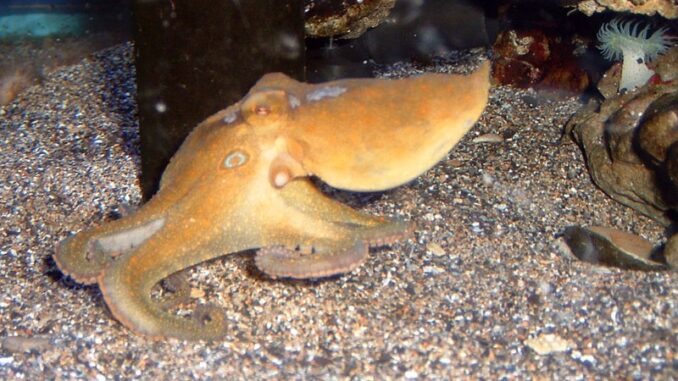
Smith-Lemli-Opitz syndrome (SLOS) is a rare human genetic disorder in which the body has too much of a biochemical known as 7-dehydrocholesterol (7-DHC). We humans produce 7-DHC naturally. When everything is working correctly, an enzyme converts 7-DHC into cholesterol – another biochemical our body needs. (Yes, it’s true, we need the correct amount and type of cholesterol). But when that enzyme isn’t formed correctly, as in the case of SLOS, 7-DHC isn’t converted into cholesterol, leaving the sufferer with too little cholesterol and too much 7-DHC: a toxic imbalance. The shocking thing is, an excess of 7-DHC has been found to be the cause of self-harming behavior in children with SLOS.
Other animals, including octopuses, also produce 7-DHC. New research implicates 7-DHC in octopus self-harming behavior.
Typical cephalopod lifespan is one to two years. In females, death comes after laying her one and only clutch of fertilized eggs. This programmed death is called semelparity, and as reproductive strategies go, it’s brutal. The female octopus actually does herself in before her eggs hatch with self-harming behavior that may include eating her arms or just tearing her skin off.
In addition to 7-DHC, there are two other steroid hormones that the female experiences after reproduction: pregnancy hormones and bile acid intermediates. This combined biochemical cocktail appears to make the octopus psychotic, resulting in self-mutilation and death. However, if scientists remove the creature’s optic glands, semelparity is avoided, and the female lives on for months after her eggs hatch.
